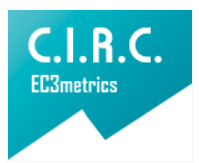Exercises of Semi-Occluded Vocal Tract in the Rehabilitation of Recurrent Paralysis: Presentation of Cases
Ejercicios de Tracto Vocal Semi-Ocluido en la Rehabilitación de Parálisis Recurrenciales: Estudio de casos
Main Article Content
The following work aims to present six cases of recurrent
unilateral vocal cord paralysis in paramedian position
that have been rehabilitated with semi-occluded vocal
tract exercises, belonging to the philosophic physiologic
trend, in contrast to the common rehabilitation with the
symptomatology tendency. These exercises are based
on the nonlinear vocal production theory that seeks to
restore the respiratory, laryngeal and resonance systems
throughout phonation. They improve the source-filter
interaction modifying the impedance of the vocal tract
by occluding and lengthening the previous. Vocal The
following work aims to present six cases of recurrent
unilateral vocal cord paralysis in paramedian position
that have been rehabilitated with semi-occluded vocal
tract exercises, belonging to the philosophic physiologic
trend, in contrast to the common rehabilitation with the
symptomatology tendency. These exercises are based
on the nonlinear vocal production theory that seeks to
restore the respiratory, laryngeal and resonance systems
throughout phonation. They improve the source-filter
interaction modifying the impedance of the vocal tract by
occluding and lengthening the previous. Vocal
Downloads
Publication Facts
Reviewer profiles N/A
Author statements
Indexed in
- Academic society
- Bogotá: Corporación Universitaria Iberoamericana
- Publisher
- Bogotá: Corporación Universitaria Iberoamericana
Article Details
Behlau, M. (2005). Voz. O Livro do Especialista (Vol. 2). brasil.
Bothe, C., Lopez, M., Quer, M., Leon, X., & Garcia, J. L. (2014). Etiología y tratamiento de la parálisis laríngea: estudio retrospectivo de 108 pacientes. Acta Otorrinolaringológica , 65, págs. 225-230. [Esp].
Calvache Mora, C. A. (2017). Eficacia de un protocolo terapéutico basado en ejercicios con tracto vocal semiocluido en sujetos diagnosticados con fatiga vocal. Corporacion Universitaria Iberoamericana, (págs. 1-42). bogota.
Cielo, C. A., Padilha de Moraes, J. L., i Christmann, M. K., & Brum, R. (2013). Exercicios de trato vocal semiocluido: Revisao de literatura. CEFAC, 15(6), 1679-1689.
Farias, P. (2016). Guia clinica para el especialista en laringe y voz. (Akadia, Ed.)
Guzmán N, M. (2012). Terapia con tracto vocal semi-ocluido:. Chilena de Fonoaudiología, 11, 8 7- 97.
Guzmán, M., Higueras, D., Fincheira, C., Muñoz, D., & Guajardo, C. (2012). Efectos acústicos inmediatos de una secuencia de ejercicios vocales con tubos de resonancia. CEFAC, 14(3), 471-480.
Núñez Batalla, F., & Suárez Nieto, C. (1999). Espectrografía clínica de la voz. Universidad de oviedo.
Olavarría L, C. A. (2008). Experiencia clínica en el manejo de parálisis cordales en posición abierta: tratamiento actual. Revista Hospital Clínico Universidad de Chile, 19, 97 - 104.
Sampaio, M., Oliveira, G., & Behlau, M. .. (2008). Investigación de los efectos inmediatos de dos ejercicios del tracto vocal semi-ocluido. Pro Fono., 20(4), 6 -261.
Simberg S, L. A. (2007). The resonance tube method in voice therapy: Description and practical implementations. Logoped Phoniatr vocal, 32, 16 5 -170.
Simberg, S. (2000). The resonante tube-a versatile device in voice therapy; in Kjaer BE. 81-85.
Story B., L. A. (2000). Acoustic Impedance of an Artificially Lengthened and Constricted Vocal Tract. Journal of Voice, 14(4), 455- 469.60SISSN-L: 1657-2513














